This article explain about resumes, like types, size, design, templates, printing, benefits, and tips for effective resumes.
Have you ever wondered how people get their dream jobs? One of the most important steps is creating a great resume. A resume is a document that showcases your skills, education, and work experience to potential employers. It’s like your personal advertisement that tells employers why you’re the right person for the job. A well-crafted resume can make you stand out from the competition, highlight your strengths, and show that you’re a perfect fit for the position you’re applying for.
Types of Resumes
- Chronological Resume: A chronological resume lists your work experience in order from most recent to oldest. It’s the most common type and is great if you have a solid work history. This format highlights your job progression and experience.
- Functional Resume: A functional resume focuses on your skills and abilities rather than your work history. It’s perfect if you’re changing careers or have gaps in your employment. This format lets you showcase what you can do.
- Combination Resume: As the name suggests, a combination resume blends the chronological and functional formats. It highlights both your skills and your work history, making it a versatile choice.
- Targeted Resume: A targeted resume is customized for a specific job. You tailor your skills, experience, and qualifications to match the job description. This shows employers that you’re a perfect fit for the position.
- Mini Resume: A mini resume is a brief summary of your career highlights. It’s great for networking events or situations where you need to quickly introduce yourself.
Key Sections of a Resume
- Contact Information: This section includes your name, phone number, email, and LinkedIn profile. Make sure your email address is professional—no funny or outdated handles!
- Objective Statement or Summary: An objective statement is a brief introduction that explains your career goals. A summary highlights your key skills and achievements. Choose one that best suits your style and the job you’re applying for.
- Education: List your educational background, including your school, degree, and graduation date. You can also include relevant coursework, honors, and your GPA if it’s impressive.
- Work Experience: Detail your previous jobs and internships. Include your job title, company name, dates of employment, and key responsibilities and achievements. Use bullet points to keep it clear and concise.
- Skills: Highlight your relevant skills. These can be technical skills like computer programming or soft skills like teamwork and communication. Be honest and specific.
- Certifications and Awards: If you have any certifications or awards, list them here. This section shows that you have additional qualifications that set you apart.
- Volunteer Experience: Volunteer work can be just as important as paid work. Include any volunteer positions you’ve held, along with your responsibilities and achievements.
- References: You can include references or simply state that they’re available upon request. Choose people who can vouch for your skills and work ethic.
Designing a Resumes
-
Choosing the Right Format
- Pick a format that highlights your strengths. Chronological is great for solid work history, functional is perfect for skill-focused resumes, and combination works if you need a bit of both.
-
Layout and Design
- Keep your resume clean and professional. Use a simple font, like Arial or Times New Roman, and make sure there’s plenty of white space. Avoid clutter and keep it easy to read.
-
Using Action Verbs and Quantifiable Achievements
- Start your bullet points with action verbs like “managed,” “designed,” or “implemented.” Whenever possible, include numbers to show your achievements. For example, “Increased sales by 20%.”
-
Tailoring Your Resume to the Job
- Customize your resume for each job you apply to. Highlight the skills and experiences that are most relevant to the job description. This shows employers that you’re a perfect match for their needs.
Resume Design Size
- The standard resume size in the United States is 8.5 x 11 inches. This is the typical letter-size paper used for professional documents. In other countries, such as those using the metric system, A4 (8.27 x 11.69 inches) is the standard size. Stick to these dimensions to ensure your resume looks professional and is easy to print.
Software to Create Resumes
- Microsoft Word: Offers a range of templates and is widely used. Easy customization options for text, layout, and design.
- Google Docs: Free to use with various templates available. Ideal for collaboration and easy sharing.
- Canva: Known for its design capabilities, Canva provides creative and professional resume templates. It’s user-friendly and allows for drag-and-drop customization.
- Adobe Spark: Offers visually appealing templates and easy customization. Great for adding creative flair to your resume.
- Resume.com: A straightforward online tool that guides you through the resume creation process with easy-to-use templates.
- Zety: Provides professional templates and a guided resume builder. Offers tips and examples to enhance your resume content.
- Novoresume: Known for its modern and professional templates. It includes suggestions to improve your resume’s effectiveness.
- Indeed Resume Builder: Simple to use and integrates directly with the Indeed job search platform. Offers templates that meet industry standards.
Resume Templates
What Are Resume Templates?
Resume templates are pre-designed layouts that you can customize with your own information. They help you create a professional-looking resume quickly and easily.
Benefits of Using Resume Templates
- Time-Saving: Templates save you time by giving you a ready-made structure.
- Cost-Effective: Often cheaper than hiring a professional designer.
- Ease of Use: Simple customization with drag-and-drop features.
- Professional Appearance: High-quality designs ensure a polished and consistent look.
Popular Sources for Resume Templates
- Canva: Extensive library of customizable templates.
- Microsoft Office: Basic templates available in Word.
- Google Docs: Free templates easily accessible with a Google account.
- Adobe Spark: Professionally designed templates with easy editing tools.
- Template Websites: Free and paid templates from websites like Envato Elements and Template.net.
Printing Resumes
Printing your resume can ensure it looks professional and is easily accessible during job interviews. Here are a few tips:
- Use Quality Paper: Opt for a heavier paper stock, typically 24 lb. or higher, with a slight texture for a professional feel.
- Choose the Right Color: White or off-white paper ensures clarity and professionalism.
- Print in High Quality: Use a laser printer for crisp text and a polished look.
- Consider Layout: Ensure margins, font size, and spacing are appropriate to avoid clutter and enhance readability.
- Use a Professional Printing Service: For a top-notch finish, consider using a professional printing service, especially if you need multiple copies.
Benefits of Using Resumes
- Showcase Skills and Experience: Clearly presents your qualifications, work history, and accomplishments.
- Professional Introduction: Serves as a first impression for potential employers.
- Structured Information: Organizes your career details in an easy-to-read format.
- Highlight Achievements: Emphasizes your key successes and contributions.
- Career Development: Helps you track your progress and identify areas for growth.
- Job Application Necessity: Essential for applying to most jobs and required by employers.
- Competitive Advantage: Differentiates you from other candidates with a tailored presentation.
Tips for Creating an Effective Resume
- Tailor Your Resume: Customize your resume for each job application to highlight relevant skills and experiences.
- Use a Clean Layout: Ensure your resume is well-organized and easy to read with clear headings and bullet points.
- Include Contact Information: Provide your name, phone number, email address, and LinkedIn profile at the top.
- Highlight Key Skills: List skills that are relevant to the job you’re applying for, using keywords from the job description.
- Showcase Achievements: Use quantifiable achievements to demonstrate your impact in previous roles (e.g., “Increased sales by 20%”).
- Keep It Concise: Limit your resume to one or two pages, focusing on the most important and recent experiences.
- Use Action Verbs: Start bullet points with strong action verbs like “managed,” “developed,” “led,” or “implemented.”
- Proofread: Check for spelling and grammar errors to ensure your resume is professional and polished.
- Include Education: List your educational background, including degrees, institutions, and graduation dates.
- Add Certifications: Mention relevant certifications or professional development courses that enhance your qualifications.
- Professional Summary: Start with a brief summary that highlights your professional background and career goals.
- References: Optionally include a line that states “References available upon request.”
Conclusion
Creating a great resume is an essential step in landing your dream job. By choosing the right format, including key sections, and avoiding common mistakes, you can craft a resume that makes a strong impression. Don’t forget to use tools like templates and resume builders to make the process easier. Good luck, and happy job hunting!
Image source: Manager looking at many different cv resume and choosing perfect person.










